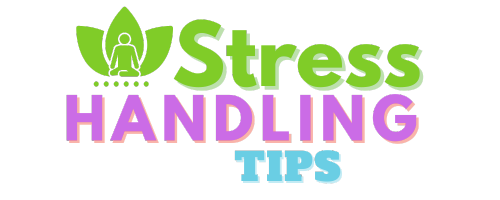# Harnessing CBT: Effective Techniques for Managing Stress and Enhancing Well-Being
Stress is an inevitable part of life, often arising from various sources such as work, relationships, and personal challenges. While some level of stress can be motivating, chronic stress can lead to significant mental and physical health issues. Cognitive Behavioral Therapy (CBT) has emerged as a powerful tool for managing stress and enhancing overall well-being. This article explores effective CBT techniques that individuals can employ to navigate stress more effectively.
## Understanding Cognitive Behavioral Therapy
Cognitive Behavioral Therapy is a structured, time-limited psychotherapy that focuses on the interplay between thoughts, emotions, and behaviors. At its core, CBT posits that negative thought patterns can lead to emotional distress and maladaptive behaviors. By identifying and challenging these cognitive distortions, individuals can alter their emotional responses and behavior. The process begins with self-awareness, where one learns to recognize automatic thoughts that contribute to stress. For instance, a person facing work-related pressure may automatically think, “I’m going to fail,” which can lead to anxiety and avoidance behaviors.
Another fundamental aspect of CBT is the emphasis on problem-solving skills. Individuals are guided to break down overwhelming problems into manageable parts, making it easier to address specific stressors. This approach not only reduces feelings of helplessness but also equips individuals with practical tools to tackle challenges. By fostering a mindset of resilience, CBT helps individuals view stressors as manageable obstacles rather than insurmountable barriers.
## Techniques for Managing Stress through CBT
### Cognitive Restructuring
Cognitive restructuring is a cornerstone technique in CBT that involves identifying and challenging negative thought patterns. To begin this process, individuals are encouraged to keep a thought diary, documenting their thoughts and feelings in response to stressful situations. This practice promotes self-reflection and awareness of cognitive distortions, such as catastrophizing or overgeneralizing. For example, if someone thinks, “I always mess up at work,” they can challenge this thought by examining evidence to the contrary, such as past successes or positive feedback from colleagues.
Engaging in cognitive restructuring not only helps in reframing negative thoughts but also encourages a more balanced perspective. By replacing harmful thoughts with more realistic and constructive alternatives, individuals can significantly reduce their stress levels. Ultimately, this technique fosters a sense of agency, empowering individuals to take control of their thoughts and, consequently, their emotional responses.
### Behavioral Activation
Behavioral activation is another effective CBT technique aimed at reducing stress and enhancing well-being. This approach focuses on encouraging individuals to engage in activities that bring them joy or fulfillment. Stress often leads to withdrawal and inactivity, which can exacerbate negative feelings. By consciously scheduling pleasurable or meaningful activities, individuals can counteract the inertia that stress induces.
To implement behavioral activation, individuals can start by listing activities they once enjoyed or new experiences they wish to try. The next step involves creating a structured plan to incorporate these activities into their daily routine. For instance, someone feeling overwhelmed by work might schedule a weekly hike or a coffee date with a friend. By actively participating in enjoyable activities, individuals can improve their mood and create positive experiences that serve as a buffer against stress.
### Mindfulness and Relaxation Techniques
Incorporating mindfulness and relaxation techniques into a CBT framework can further enhance stress management. Mindfulness involves being present in the moment and cultivating an awareness of one’s thoughts and feelings without judgment. Techniques such as mindfulness meditation, deep breathing exercises, and progressive muscle relaxation can significantly reduce stress levels. These practices help individuals develop a greater awareness of their physiological responses to stress, enabling them to respond more effectively.
Practicing mindfulness can also aid in breaking the cycle of rumination, where individuals obsessively dwell on negative thoughts. By focusing on the present moment, one can create a mental space that allows for greater clarity and emotional regulation. Additionally, relaxation techniques can activate the body’s natural relaxation response, reducing the physiological symptoms of stress, such as elevated heart rate and muscle tension. Integrating these techniques into daily routines can lead to improved emotional resilience and overall well-being.
## The Role of Support and Professional Guidance
While self-directed CBT techniques can be incredibly effective, seeking professional guidance can enhance the therapeutic process. A trained therapist can provide valuable insights, helping individuals navigate their unique stressors and develop personalized coping strategies. Group therapy sessions can also offer support and validation, as individuals connect with others facing similar challenges.
Moreover, therapists can introduce additional CBT techniques, such as exposure therapy for those dealing with specific phobias or anxiety disorders. This structured approach allows individuals to confront their fears in a controlled environment, gradually reducing their anxiety over time. The collaborative nature of therapy fosters accountability and motivation, making it easier for individuals to stick to their stress management plans.
## Conclusion
Harnessing the power of Cognitive Behavioral Therapy offers individuals effective techniques for managing stress and enhancing overall well-being. By understanding the relationship between thoughts, emotions, and behaviors, individuals can cultivate resilience and develop healthier coping mechanisms. Techniques such as cognitive restructuring, behavioral activation, and mindfulness can significantly reduce stress and improve emotional regulation.
Ultimately, the journey toward stress management is deeply personal, and while self-help strategies are invaluable, professional support can provide the additional guidance needed for lasting change. By integrating these CBT techniques into daily life, individuals can take proactive steps toward a more balanced, fulfilling existence, transforming stress from a debilitating force into an opportunity for growth and resilience.

